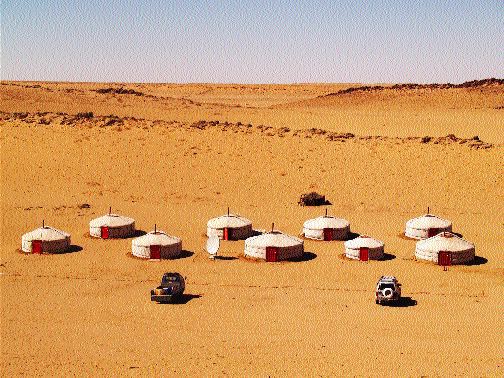Perth, Western Australia — In the aftermath of the Bre-X scandal, Canadian Armand Beaudoin, a fellow prospector working with Aussie Doug McGay in Indonesia, suggested McGay should break camp and head to Mongolia. Seven years later, that’s precisely where McGay found himself.
Sadly, in the meantime, Beaudoin passed away and at his funeral the man giving the eulogy was the same Australian businessman and prospector who years earlier had heeded the wisdom of his late friend.
These days, McGay is thankful for that advice and a true believer in Mongolia’s mineral potential, so much so that his visits to Australia are rare. But on one such visit he told The Northern Miner that he sees a number of similarities between modern Mongolia and the renowned Kalgoorlie camp at the start of Australia’s gold boom.
There has been a remarkable transformation in Mongolia in recent years. It is now a preferred destination for mineral exploration, with many Western investors tantalized by the silky marketing skills of Ivanhoe Mines (IVN-T) Chairman Robert Friedland, who often waxes eloquently about his company’s Oyu Tolgoi copper-gold project in Mongolia, and neighbouring China’s ravenous appetite for base and precious metals.
McGay, who worked for Ivanhoe and other North American miners, is now the managing director of Batu Mining Mongolia, a company seeking a listing on either the TSX Venture Exchange or London’s Alternative Investment Market. Batu Mining is also talking to companies about forming a Mongolian joint venture, with Batu’s widely spread prospects as the basis of any agreement.
One prospect that is generating significant interest is Dalain Els, in the East Gobi area, where the leases are dissected by the Mongolian state railway — a great asset in a country lacking infrastructure.
Dalain Els hosts a pluton measuring 13 km in diameter where widely spaced soil sampling has revealed a copper anomaly more than 4.5 km in length.
A company document — distributed by the Mongolian government during a recent roadshow through Australia, in which McGay acted as both ambassador and speaker — says that rock samples from three artisanal pits at Dalain Els returned values of up to 8.3% copper, 1.8 grams gold and 11.8 grams silver per tonne.
The roadshow looked impressive when it rolled through Perth. Of note, was a persuasive speech by the deputy chairman of Mongolia’s Mineral Resources & Petroleum Authority, D. Jargalsaikhan — one of the country’s senior mining bureaucrats with business ties to the U.K. and North America.
Jagalsaikhan told West Australian miners that Mongolia’s mining code is similar to that of Western Australia, adding that his country also offers tax incentives for exploration. He said numerous majors, including BHP Billiton (BHP-N, BHP-A), Rio Tinto (RTP-N) and Brazil’s CVRD (RIO-N), had prospects and joint ventures in Mongolia. A large number of Canadian and a few Australian companies are there, too, with many private and public firms from China and elsewhere in Asia.
Meanwhile, China has shown a particularly keen interest in Mongolia’s emerging coal discoveries, which Jargalsaikhan estimated at about 100 billion tonnes.
McGay said the non-Western companies in Mongolia, included Zologgaya Victory, Mitsui, Malaysia Gold Mine, Kogima, Mongol Gazare and Erdenet Copper. Chinese participation is being carried out through China Non Ferrous Metals in the big Tumurtin Ovoo lead-zinc project; Shougang Group and Bao Gan Steel in several iron ore projects; Jiuquan Steel and Iron Co. in possible coal rail transportation concepts; and Chinese Nuclear Exploration Corp. with its blinkered focus on uranium.
Western companies active there include AngloGold Ashanti (AU-N), Erdene Gold (ERD-V), International Uranium (IUC-T), Barrick Gold (ABX-T, ABX-N), Fortress Minerals (FST-V), UGL Enterprises (UGS-V), Far East Minerals, Bayfield Ventures (BYV-V), and Australia’s successful mid-tier gold miner Troy Resources (TRY-A).
McGay often amused the Australian delegates during his presentation and said that when in Mongolia they should avoid vodka-drinking competitions, wrestling with the locals, and telling Genghis Khan jokes.
— The author is a freelance writer based in Perth, Australia.


Be the first to comment on "Mongolia’s Aussie ambassador"